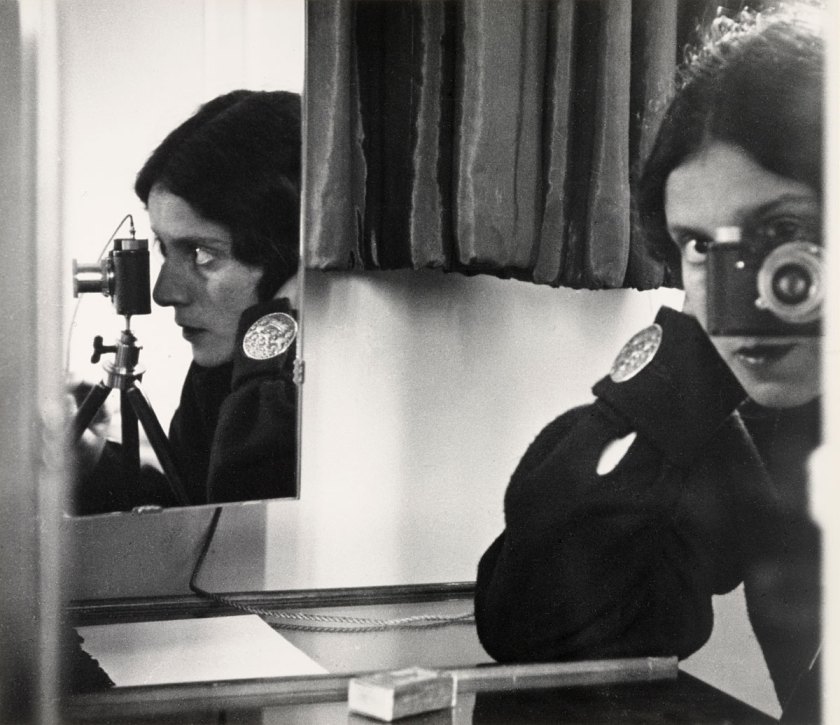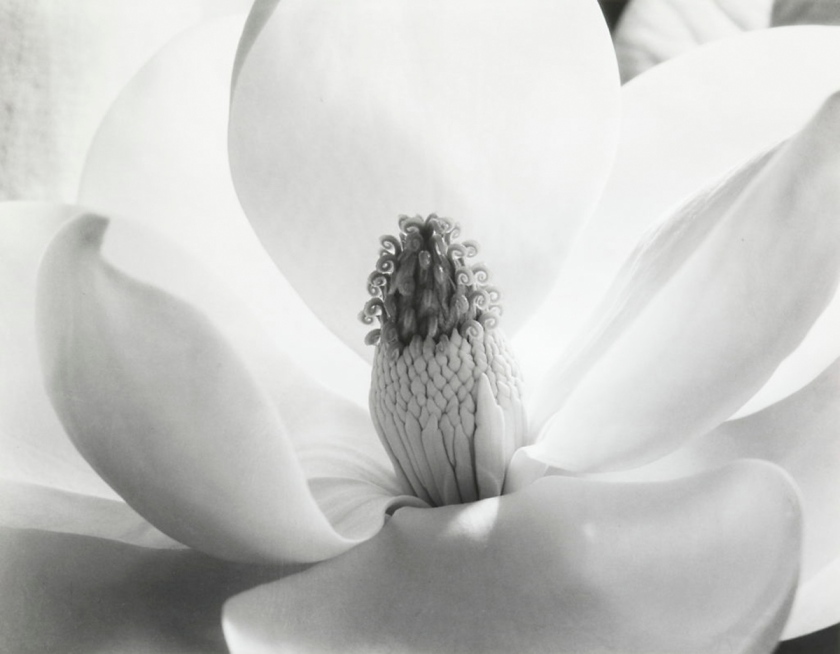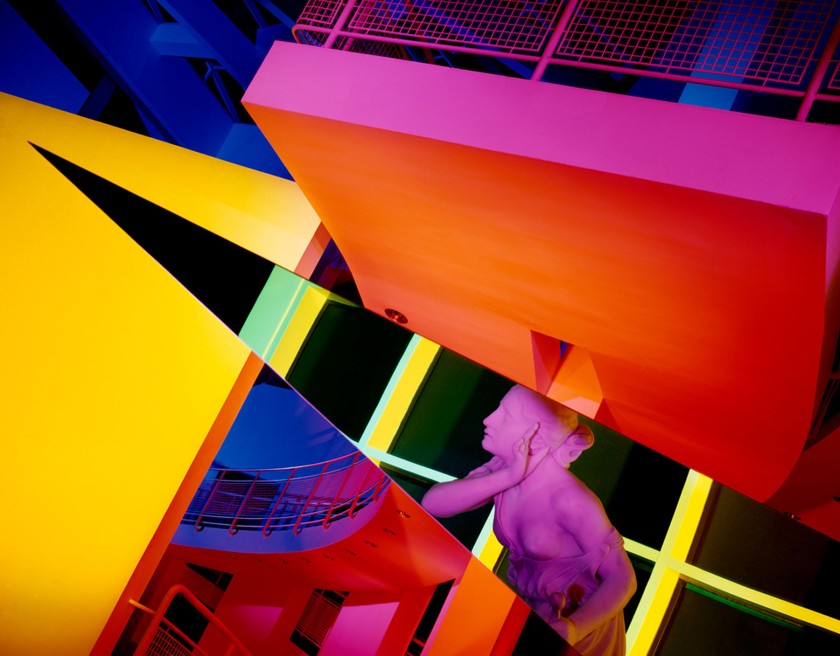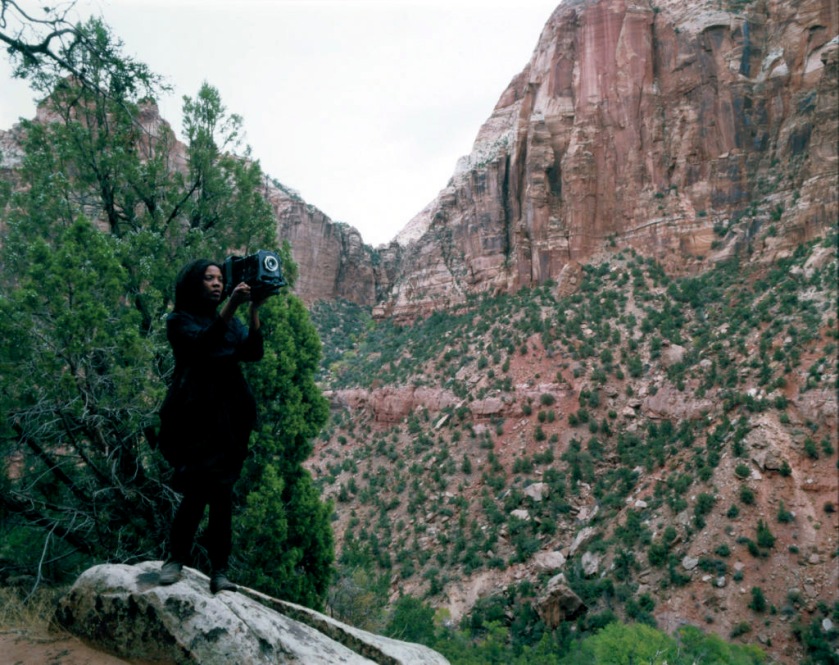Exhibition dates: 17th April – 1st August 2021
Curator: Sarah Kennel with Maria Kelly, curatorial assistant for photography
Paula Chamlee (American, b. 1944)
Nude Collage #1
1998
Gelatin silver print
7 3/4 x 9 1/2 inches
Gift of Lucinda W. Bunnen for the Bunnen Collection
© Paula Chamlee
Paula Chamlee’s work stretches beyond the realm of straight photography and into assemblage, painting, and drawing. This collage was inspired by photocopies of prints that her husband, the late photographer Michael A. Smith, intended to share with a prospective collector. Because the photographs’ dimensions did not match with that of the copy machine, the images required cropping and taping. Intrigued by the nature of these cast-off bits piled together and the relationship of the parts to the whole, Chamlee created this collage by piecing together images of her body that Smith had taken.
Out of energy this weekend with all that is going on with being made redundant at the University. Physically and emotionally drained. Apologies.
So just two words… more please!
Marcus
Many thankx to the High Museum of Art for allowing me to publish the photographs in the posting. Please click on the photographs for a larger version of the image.
For nearly all of photography’s one hundred eighty-year history, women have shaped the development of the art form and experimented with every aspect of the medium.
Conceived in conjunction with the centennial of the passage of the Nineteenth Amendment, which granted suffrage for some women, this exhibition showcases more than one hundred photographs from the High’s collection, many of them never before on view, and charts the medium’s history from the dawn of the modern period to the present through the work of women photographers.
Organised roughly chronologically, each section emphasises a distinct arena in which women contributed and often led the way. Among the artists featured are pioneers of the medium such as Anna Atkins as well as more recent innovators and avid experimenters, including Betty Hahn, Barbara Kasten, and Meghann Riepenhoff. The exhibition also celebrates the achievements of numerous professional photographers, including Berenice Abbott, Margaret Bourke-White, and Marion Post Wolcott, who worked in photojournalism, advertising, and documentary modes and promoted photography as a discipline.
The exhibition also highlights photographers who photograph other women, children, and families, among them Sally Mann, Nan Goldin, and Diane Arbus, and those who interrogate ideals of femininity through self-portraiture. Also on view will be works by contemporary photographers who challenge social constructions of gender, sexuality, and identity, including Zanele Muholi, Sheila Pree Bright, Cindy Sherman, Mickalene Thomas, and Carrie Mae Weems.
Underexposed B roll
Mickalene Thomas (American, b. 1971)
Les Trois Femmes Deux
2018
Dye coupler print
High Museum of Art, Atlanta. purchase with funds from the Friends of Photography
Mickalene Thomas creates vibrantly layered artworks that reclaim iconic images to centre Black female subjectivity in the history of art. A direct response to Edouard Manet’s Luncheon on the Grass, this photograph transposes the scene of three White figures having a picnic in a park to an interior view of three exquisitely coiffed and adorned Black women (including Thomas’s partner at right) gazing directly and confidently at the viewer. The colourful, wood-panelled living room, complete with fake plants and mismatched African textiles, evokes Thomas’s 1970s childhood and the aesthetics of Blaxploitation cinema, known for its audacious, dangerous, and sexually confident gun-toting heroines.
This spring, the High Museum of Art will present “Underexposed: Women Photographers from the Collection” (April 17 – August 1), an exhibition featuring more than 100 photographs from the Museum’s collection, including many that have never before been exhibited. The artworks demonstrate the notable contributions of women throughout the history of photography, spanning from innovators of the medium to contemporary practitioners who investigate the intersections of photography, representation and identity.
Originally conceived in conjunction with the centennial of the passage of the 19th Amendment, “Underexposed” pays homage to the work of women who have pioneered and championed the art of photography, from its earliest days through today. The exhibition is arranged roughly chronologically and showcases distinct arenas in which women photographers flourished and often led the way: as professionals working across multiple genres; as avid experimenters pushing photography into new directions; as teachers and patrons who supported the growth of the medium; and as creative, critically engaged artists exploring such issues as gender, identity and politics.
“With this exhibition’s focus on women photographers, ‘Underexposed’ highlights a trajectory of participation and influence extending from the earliest days of photography to a leading role in defining the medium today,” said Rand Suffolk, the High’s Nancy and Holcombe T. Green, Jr., director.
Sarah Kennel, the High’s Donald and Marilyn Keough Family curator of photography, added, “Focusing on the last 100 years, this exhibition highlights how women have embraced photography as a powerful form of professional and creative expression. In bringing together pioneers of the medium with artists who reflect critically on photography’s capacity to shape and challenge concepts of gender and identity, we have an extraordinary opportunity to expand the history of photography and bring greater recognition to the many women who have contributed to and led the field.”
The exhibition opens with a selection of work by artists who transformed the practice of photography from the 1920s through the 1950s. Coinciding with the global rise of the feminist ideal of the “New Woman” in the late 1900s, practitioners including Ilse Bing, Margaret Bourke White, Dorothea Lange and Imogen Cunningham emerged as savvy leaders in the fields of documentary, fashion and fine art photography. The exhibition continues with a section focused on artists who have experimented with photographic technologies and alternative processes to redefine the expressive and material limits of the medium. Works made in the 1970s and 1980s by artists including Barbara Kasten, Olivia Parker and Sheila Pinkel join pieces by contemporary makers, such as Meghann Riepenhoff and Elizabeth Turk, who continue to expand the language of photography.
The second half of the exhibition explores how women photographers have used photography to reflect on and interrogate the personal, social and cultural dimensions of gender and identity. Works by Diane Arbus, Nan Goldin, Susan Meiselas, Anne Noggle and Clarissa Sligh reveal different ways women have looked at and photographed other women. Similarly, works by Sheila Pree Bright, Sandy Skoglund and Susan Worsham deconstruct ideas around domesticity and feminine ideals. The exhibition closes with a selection of portraits and self-portraits by Judy Dater, Zaneli Muholi, Cindy Sherman, Mickalene Thomas and Carrie Mae Weems, among others, that explore the intersections of photography, representation and identity.
“Underexposed: Women Photographers from the Collection” will be presented on the lower level of the High’s Wieland Pavilion. This exhibition is curated by Sarah Kennel with Maria Kelly, curatorial assistant for photography.
Press release from the High Museum of Art
Anna Atkins (British, 1799-1871)
Mauritius, from Cyanotypes of British and Foreign Flowering Plants and Fern
1851-1854
Cyanotype
10 1/8 x 7 15/15 inches
Gift in honour of Edward Anthony Hill
Doris Ulmann (American, 1884-1934)
Studious Girl, Fleischman Relative
before 1931
Platinum print
Purchase
Doris Ulmann began her photographic career while attending the Clarence H. White School of Photography in New York – the first art photography school in the United States. There she worked in the Pictorialist tradition, embraced the “painterly” qualities of soft focus, and manipulated surfaces. After undergoing a major surgery, Ulmann decided to pursue her interest in people “for whom life had not been a dance.” She began traveling throughout the southeastern United States documenting the folk traditions and people of the Appalachian Mountains. She made several sun-dappled portraits of this young girl (identified on other prints as “Kreiger girl”) in and around Berea, Kentucky.
Ilse Bing (American born Germany, 1899-1998)
Self-Portrait in Mirrors
Paris, 1931, printed c. 1941
Gelatin silver print
High Museum of Art, Atlanta
Purchase with funds from Georgia-Pacific Corporation
Berenice Abbott (American, 1898-1991)
“El” Station Interior, Sixth and Ninth Avenue Lines, Downtown Side
1936
Gelatin silver print
10 3/8 x 13 3/8
Purchase with funds from a Friend of the Museum
A towering figure of photography, Berenice Abbott learned the craft while assisting artist Man Ray in Paris. By 1926, she had established her own portrait studio, capturing the leading cultural icons of the day. She also befriended French photographer Eugène Atget and became his tireless champion, even rescuing many of his negatives after his death. After returning to New York in 1929, Abbott spent the next decade working on a major project documenting the rapidly transforming cityscape, which she published in the 1939 book Changing New York, produced with her partner, art critic Elizabeth McCausland. Although known for her urban views, in the 1950s, Abbott started working with Massachusetts Institute of Technology to explore the potential for photography to illustrate scientific principles and phenomena, as shown in this picture.
Lola Alvarez Bravo (Mexican, 1903-1993)
Frida looking into mirror
1944
Gelatin silver print
8 3/4 x 7 1/4 inches
Purchase with funds from Margaretta J. Taylor
© Lola Alvarez Bravo/Artists Rights Society (ARS), New York
Doris Derby (American, b. 1939)
Grass Roots Organizer, Mississippi
1968
Gelatin silver print
Purchase with funds from Jeff and Valerie Levy
Dr. Doris Derby is an educator, anthropologist, and photojournalist based in Atlanta. In the 1960s and 1970s, she was an active member of the Student Nonviolent Coordinating Committee (SNCC), the Mississippi Freedom Democratic Party, and the Adult Literacy Project. Derby’s photographs reflect her interest in and concern for the role of poor, disenfranchised women during the movement. Many women had been fired from their jobs for registering to vote; in response, they built skill-based cooperatives and community groups that kept their families and communities together in very difficult times.
Diane Arbus (American, 1923-1971)
A Family on the Lawn One Sunday in Westchester in June, 1968
1968, printed 1970
Gelatin silver print
14 3/4 x 15 inches
Purchase with funds from a friend of the Museum
Imogen Cunningham (American, 1883-1976)
Magnolia Blossom
1975
Gelatin silver print
10 1/4 x 13 inches
Purchase with funds from a Friend of the Museum
© The Imogen Cunningham Trust
Joyce Neimanas (American, b. 1944)
Daytime Fantasies
1976
Gelatin silver print with applied colour
Gift of Lucinda W. Bunnen for the Bunnen Collection
For most of her career, Joyce Neimanas has created photographic images without directly using a camera, choosing instead to make complex collages and photograms of found imagery derived primarily from mass culture. In this work, Neimanas enlarged and printed a still from a 16 mm pornographic film to which she applied colour and annotated with text drawn from the controversial Kinsey Report on Sexual Behavior in the Human Female (1953). Made at a time of expanded conversation around gender, feminism, and sexual liberation, this work explores and challenges conventional representations of women’s sexuality.
Cindy Sherman (American, b. 1954)
Untitled
1979, printed 1989
From the Untitled Film Stills series
Chromogenic print
Gift of Lucinda W. Bunnen for the Bunnen Collection
Cindy Sherman has used self-portraiture as a strategy to interrogate representations of identity, gender, and mass culture. In her breakout Untitled Film Stills series, she photographed herself in varied guises inspired by generic Hollywood depictions of female characters: the bereft housewife, the sultry vamp, the wide-eyed ingénue. She challenges traditional understandings of photography and self-portraiture and exposes mass media’s constructed norms and ideas about femininity. Although she shot the original series in black and white as a nod to mid-twentieth-century B-grade black and white films, she also reprised the themes in colour works like this one.
Graciela Iturbide (Mexican, b. 1942)
Magnolia, Juchitán, México
1986
Gelatin silver print
20 x 16 inches
Nan Goldin (American, b. 1953)
Cookie and Sharon on the Bed, Provincetown, MA, Sept. 1989
1989
Dye destruction print
Gift of Lucinda W. Bunnen for the Bunnen Collection
One of the most important photographers of her generation, Nan Goldin is an artist whose personal life is at the centre of her art. Her Cookie Portfolio documents her intimate friendship with Cookie Mueller. This photograph strikes a somber note as we see Cookie’s friend and lover Sharon sitting at the front of her bed, disconnected from a frail-appearing Cookie, who lies underneath her wedding picture. Cookie’s husband, Vittorio, died from AIDS the month this picture was made, and Cookie would die two months later. Despite the palpable loss sensed in the distance between the earlier and later works in the portfolio, Goldin conveys the steadfastness and tenderness of female friendship and support, which also infused her process: “I’m looking with a warm eye, not a cold eye. I’m not analysing what’s going on – I just get inspired to take a picture by the beauty and vulnerability of my friends.”
Sandy Skoglund (American, b. 1946)
Gathering Paradise
1991
Dye coupler print
47 x 60 1/2 inches
Gift of Mr. and Mrs. James L. Henderson, III
Like many of installation artist and photographer Sandy Skoglund’s surrealist views of domestic spaces, this macabre, pink-tinged scene of squirrels running riot across a patio suggests the frenetic anxiety that bubbles beneath the placid appearance of suburban life. Eschewing digital manipulation, Skoglund meticulously constructs room-size theatrical sets – in this case, complete with sculpted squirrels – which she then photographs. At once funny and unsettling, her photographs of everyday spaces invaded by a menagerie of fantastical animals reveal the nightmarish aspects of the American dream.
Judy Dater (American, b. 1941)
Self-Portrait on Deserted Road
1982
Gelatin silver print
14 1/4 x 18 1/4
Gift of Lucinda W. Bunnen for the Bunnen Collection
Over the course of her career, Judy Dater has primarily photographed women, including herself. This work is from a series she made during ten trips to national parks in the West between 1980 and 1983, where she photographed herself nude amidst the grandeur of nature. Seemingly stranded on an empty, endless road, she appears vulnerable and lost, but across the larger series, her photographs veer from savage self-examination to carefully constructed performances that explore identity, subjectivity, and femininity. One of the key influences on Dater’s photography is the work of Imogen Cunningham, who was also a close friend.
Barbara Kasten (American, b. 1936)
Architectural Site 17
1988
Dye destruction print
Support/Overall: 50 x 60 inches
Purchase
Sheila Pree Bright (American, b. 1967)
Untitled 13
2006
From the Suburbia series
Dye coupler print
49 1/2 inches
Gift of Sandra Anderson Baccus in loving memory of Lloyd Tevis Baccus, M.D.
© Sheila Pree Bright
Sheila Pree Bright (American, b. 1967)
#1960Now Ferguson protest: National March in Ferguson, “We Can’t Stop” Mike Brown, Ferguson, MO, March 2015
2015
From the series #1960Now
Gelatin silver print
Purchase with funds from the Friends of Photography
Sheila Pree Bright is one of Atlanta’s most prominent photographers working today. For the ongoing series #1960Now, she travels with and photographs the civic actions and protests of the Black Lives Matter movement. The title refers to the similarities between these contemporary protests and the civil rights movement and photography of the 1960s. The hashtag in the title refers to social media’s growing role in circulating images and defining current events. Here, two young girls and a little boy are at the forefront of a march in Ferguson, emphasising how the youth of today can be change makers for tomorrow.
Xaviera Simmons (American, b. 1974)
10A Untitled
2010
From the Utah series
Dye coupler print
30 x 40 inches
Purchase with David C. Driskell African American Art Acquisition Fund
© Xaviera Simmons
Zanele Muholi (South African, b. 1972)
Zibuyile I (Syracuse)
2015
Gelatin silver print
25 5/8 x 17 inches
Purchase with funds from the Donald and Marilyn Keough Family and the H. B. and Doris Massey Charitable Trust
Visual activist Zanele Muholi, whose personal gender pronoun is they, uses self-portraiture to address the politics of gender and race in the ongoing body of work Somnyama Ngonyama (which translates to “Hail, The Dark Lioness” from their mother tongue, Zulu). Muholi poses in locations around the world and incorporates everyday found objects such as props, costumes, and set dressing to build images that draw on their personal family history, consumer culture, and art history. In this photograph, Muholi addresses the viewer with a forceful, piercing gaze, challenging the conventional exoticised, othered, and sexualised depictions of Black female bodies.
Jill Frank (American, b. 1978)
everyone who woke up at the yellow house
2016
Double sided inkjet print
High Museum of Art, gift of Louis Corrigan
V. Elizabeth Turk (American, born 1945)
Calaeno
2018
Van Dyke print
High Museum of Art, Atlanta, purchase with funds from Lucinda W. Bunnen for the Bunnen Collection
© Elizabeth Turk
The High Museum of Art
1280 Peachtree St NE
Atlanta, GA
30309
Opening hours:
Tuesday – Saturday 10am – 5pm
Sunday 12 – 5pm
Monday closed


































You must be logged in to post a comment.